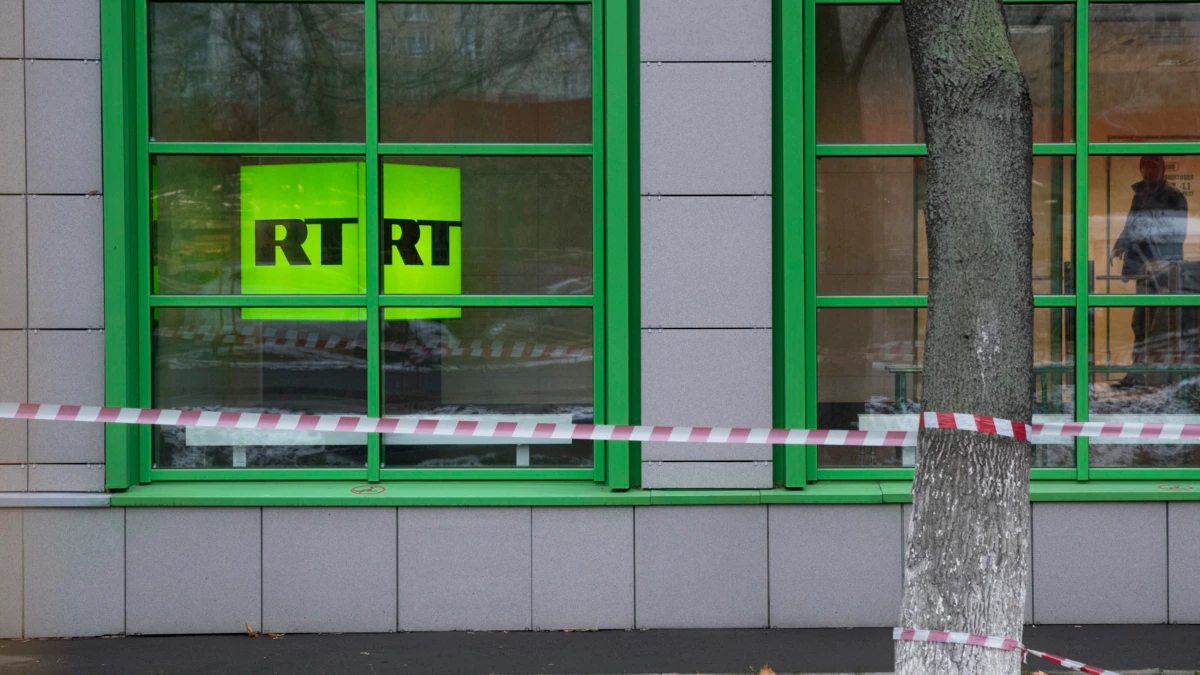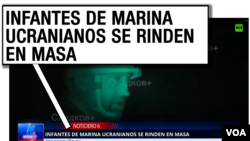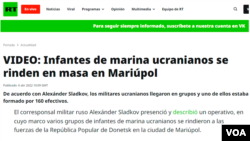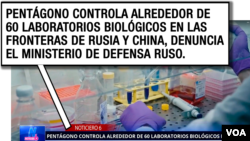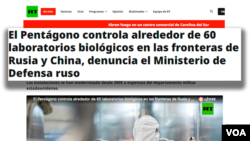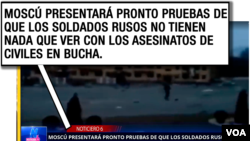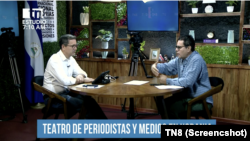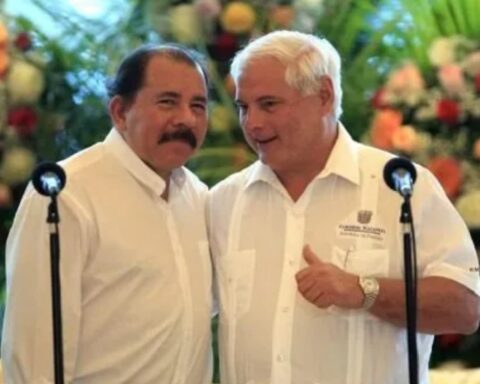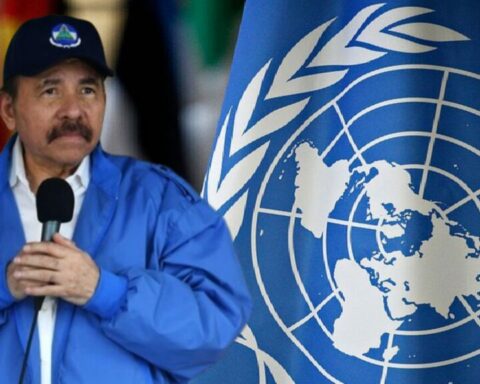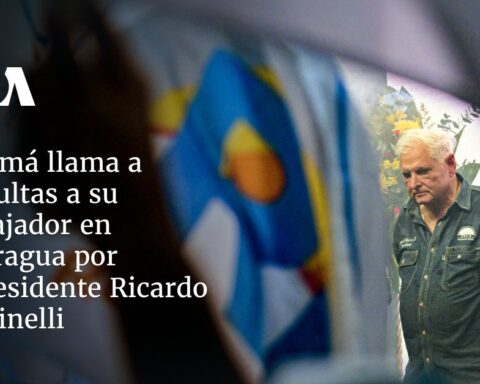On Russian television the war in Ukraine does not exist and neither does it on Nicaraguan television. What exists is a “peacekeeping operation.” Russian forces’ attacks on civilians are a “theater of Ukrainian journalists and media.” What Russian President Vladimir Putin wants is to “free people from suffering and genocide” in Ukraine. This is the story of the war that the television channels in Nicaragua are telling. They replicate without modifying a single word the contents of the official Russian television channel in Spanish, RT news.
“In Nicaragua there is no free press [entonces] the presence of RT It has a great advantage compared to other countries where they are competing against a free press,” he told the voice of america Ryan Berg, political scientist at the Center for Strategic and International Studies, CSIS, for its acronym in English.
In the last 13 years of the Sandinista government of Daniel Ortega have gone out of circulation in Nicaragua at least 20 media outlets due to laws, fiscal persecution, economic suffocation, harassment and repression, according to the Violeta Barrios de Chamorro foundation.
Russia’s action in Ukraine is “a peacekeeping operation”, was what the channel 8 to its viewers in the broadcast of last February 24 when Russia’s military invasion of Ukraine began.
The pro-Russian narrative of the Cass 8, directed by Juan Carlos Ortega, son of the Nicaraguan president, is the same one adopted by the rest of the family’s media conglomerate that controls 8 of the 9 television channels in the country, plus the state channel. The content that is broadcast about Ukraine is limited to the pronouncements of Kremlin officials and what it transmits RT news.
The channel 6 owned by the state, in the international section of the news on April 6, presented as news an alleged mass surrender of 160 Ukrainian Marines to the Russian military forces. While the video was filmed, the journalist read the text published by RT on its website: “… several groups of Ukrainian Marines surrendered to the forces of the Donetsk People’s Republic in the city of Mariupol…”, said the presenter of Newscast 6.
RT’s version
In the same broadcast on April 6, the journalist from the Newscast 6 read other content RT on the accusation without proof of the Kremlin, assuring that the United States has biological laboratories on the borders of Russia and China. On this statement, the United Nations has previously said that “there are no signs of biological weapons laboratories in Ukraine”, however, on air, the journalist only repeated the position of the Russian Ministry of Defense.
RT’s version
The Impact of RT on the Nicaraguan audience
“These gaps that the independent media are leaving are what the media related to the government are trying to fill,” he assured the VOA a Nicaraguan professor on condition of anonymity for security reasons. However, he assured that the government has not been able to have the success it hoped for in controlling access to information, since since the sociopolitical crisis in Nicaragua worsened in 2018, more than half of the population migrated from traditional media ( radio, print media, television) to digital platforms.
“In such a way that the government can have all the radio and television stations, but their audience and their credibility are not necessarily improving as they would expect,” said the academic. “You can flood the stadium with all the sound you want, but another thing is for people to listen to it and believe it,” he said.
RT’s “polarization” strategy
The strategy of the Russian media in Nicaragua is similar to the one they have in the region, he told the VOA, Vladimir Rouvinski, professor of international politics at ICESI University in Colombia, in regard to increasing polarization and promoting the Kremlin’s vision of what is happening in Latin America and the world.
“What they are offering is not an alternative version, but a once again dominant version, hegemonic on the part of Russia that tries to give an interpretation to the scenarios that are happening” in the region, explained the academic.
The intention of Russia, which dedicates between 800 and 900 million dollars a year to the media financed by the state according to Rouvinski, is to respond from the logic of reciprocity in Latin America: “The Russian government is convinced that the problems it has [Rusia] with (…) the countries of the former Soviet Union are due to US policies”.
In the same way, Russia seeks to polarize and promote a negative view of the US in Latin American countries by promoting the narrative that “US policies towards” the region are “colonialist” and attacking democracy as a form of government, argued Professor Rouvinski. .
The control of Daniel Ortega’s family over Nicaraguan TV
The Kremlin’s version has been distributed throughout the media chain managed by the sons of Daniel Ortega. The channel 8 it is managed by Juan Carlos Ortega; although according to tax documents it is owned by Yadira Leets, wife of Rafael Ortega, another son of the president; Channel 4, is managed by Daniel Edmundo; Y Channel 13 by Camila Ortega Murillo.
On Nicaraguan television, statements by the president of Ukraine, the United Nations or the US blaming Russia for the war are non-existent. Only Putin officials always have a guaranteed space to show their version of events. “Moscow will soon present evidence that Russian soldiers have nothing to do with the murders in Bucha,” the report reported. channel 6 last April 4.
what RT says
The opinion-makers of official television
On a talk show on the channel 8 on February 28, the journalist, without mentioning the murders of civilians, including women and children attributed to Russia, in his interview segment suggested that the coverage of the war was a “theater of Ukrainian journalists and media”
“The well-informed intelligent public has managed to remove those masks, right now what is happening with the coverage and the focus has been left bare,” said presenter Ervin Vega, in the conversation he had with guest Omar García, frequent media collaborator officialists.
Russian narrative, also in Nicaraguan digital media
The image of a strong man, surrounded by his sympathizers and speaking of the decision to “liberate people from suffering and genocide” was the one that predominated in the digital media in Nicaragua controlled by the Ortega government on March 18 when Vladimir Putin appeared publicly after announcing “a military operation” in Ukraine. Exactly the same version published by the channel RTwas republished by the media controlled by the Ortegas.
The history of RT in Latin America
RT’s Spanish-language service was launched in 2009 and has amassed a larger audience than the English-language service, founded four years earlier. On Facebook, RT in Spanish it has more than 16 million followers, while its English counterpart has 6.3 million. The same thing happens on Instagram, although on a smaller scale, where the Spanish version of RT It has 1.1 million followers and the English one 880,000.
On the same Facebook platform, the account of the BBC in Spanish it has a little more than 5 million followers. The CNN account in Spanish is followed by 13.6 million people.
on Twitter as much CNN in Spanish has 21.4 million followers and the Spanish account of the BBC, 4.8 million. Although both outlets have more followers than RT newswhich has 3.5 million, the web portal of RT has become the third most shared on Twitter for content in Spanish about the conflict in Ukraine, according to the agency Associated Press, surpassing international media such as the BBC either CNN.
Although RT seems to be more successful than its competitors in Spanish BBC Y CNN, Associated Press cites a report by the Ponce de Leon firm according to which, in a period of 8 days in the month of March, 171 accounts were responsible for 11% of the content published or republished on RT Y Sputnik, the other official outlet of the Kremlin. That is, those 171 accounts “posted more than 200 thousand times with an average of 155 tweet daily for each account one of the accounts of (RT Y Sputnik) which is significantly higher than a normal user,” says Associated Press.
Experts explain that another of the factors that contributes to the growth strategy of RT in Spanish is that news that does not have to do with geopolitical issues, but is of interest to the public, such as hurricanes, accidents or floods, is reported as the rest of the traditional media does. However, certain facts that are of interest to the Kremlin, such as the United States, NATO and Ukraine, among others, “are mixed with other pieces of disinformation or with a narrative twist in favor of Russia. Which definitely confuses the reader because it gives the (wrong) impression of factual accuracy,” explains Ryan Berg of CSIS. Who considers it important to define the metrics with which certain publications are evaluated in view of the “increasing interest of Russia in the space of influence and disinformation in Latin America.”
On Nicaraguan television, the narrative of RT news it is dominant due to factors associated with the closure of the independent media, but in the rest of the region, it competes with the traditional press, which does not have the same budgets that the Kremlin allocates for its media strategy.
Connect with the Voice of America! Subscribe to our channel Youtube and turn on notifications, or follow us on social media: Facebook, Twitter and Instagram.

